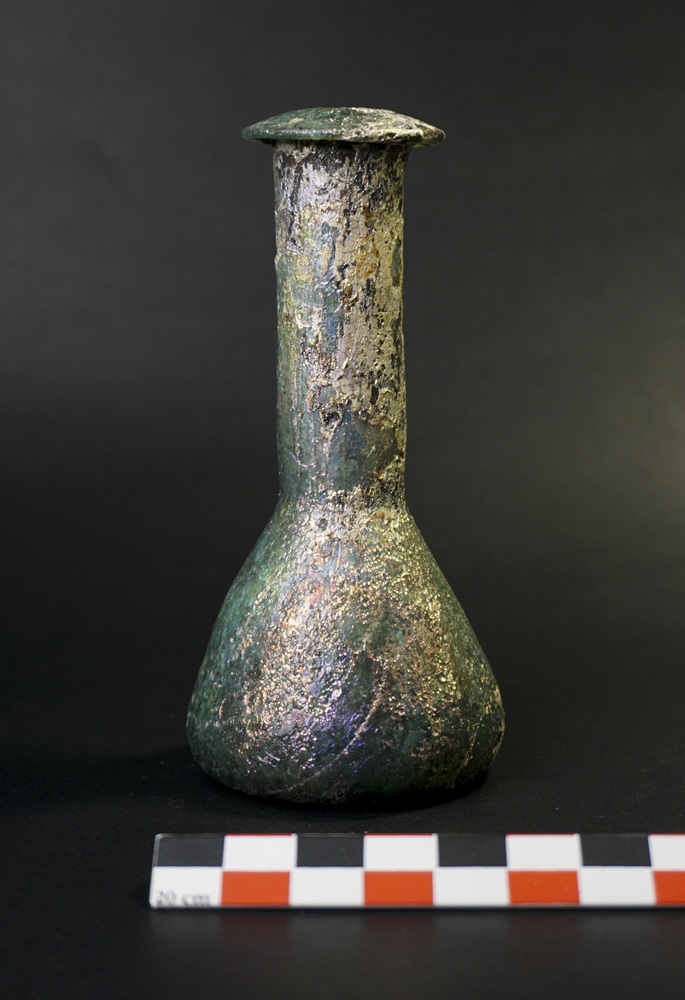Roman Glassware
With a conical base and a long slender neck, this unguentarium (small bottle) was used to hold oils, liquids, and powders. Products shipped in bulk containers would be dispensed and sold in these unguentaria. Unguentaria have commonly been discovered in graves, and were placed with the deceased as grave gifts containing perfume, wine or incense.
To create glassware, Roman glassworkers fused sand and nitrate together by placing them in a kiln heated to 1100 degrees Fahrenheit. The addition of various metallic oxides coloured the glass: cobalt and copper oxide turned the glass blue, whereas manganese coloured it purple or yellow. After being fused together, the mixture had to be cooled, as it was too liquid to work with. They would then reheat the kiln to around 750 degrees Fahrenheit to bring the mixture to a plastic consistency, ideal for moulding the glass into vessels.

